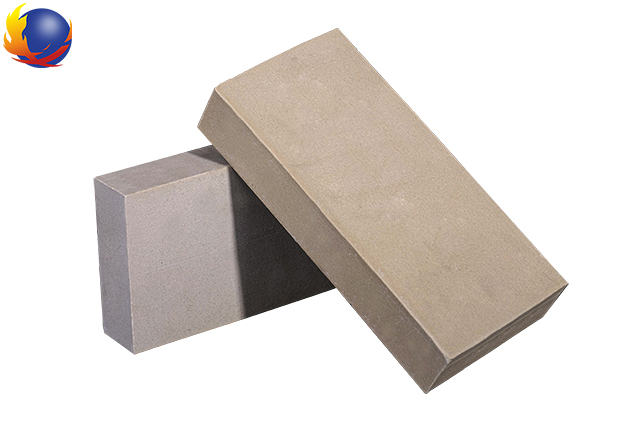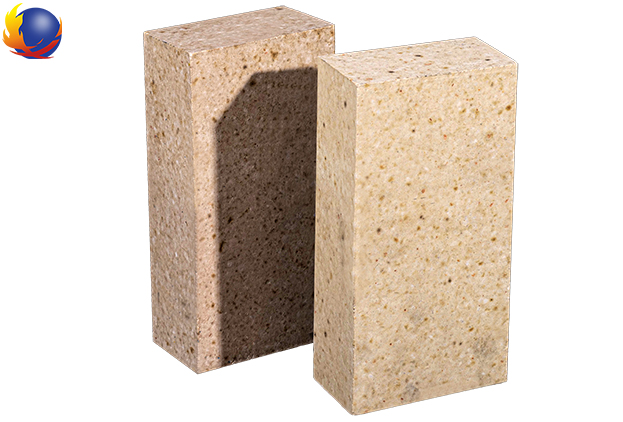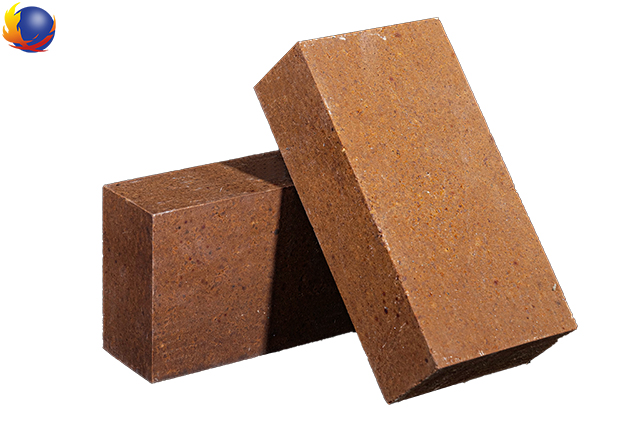Acidic refractory materials
Silica bricks and clay bricks are used in larger quantities. Silica bricks are siliceous products containing more than 93% SiO2, and the raw materials used are silica, waste silica bricks, etc. Silica bricks have strong resistance to acidic slag erosion, but are easily corroded by alkaline slag. Its load softening temperature is very high, close to its refractoriness. After repeated calcination, the volume does not shrink, and even expands slightly, but the thermal shock resistance is poor. Silica bricks are mainly used in thermal equipment such as coke ovens, glass melting furnaces, and acidic steelmaking furnaces. Clay bricks contain 30%~46% alumina. It uses refractory clay as the main raw material, with a refractoriness of 1580~1770℃ and good thermal shock resistance. It belongs to weakly acidic refractory materials, has corrosion resistance to acidic slag, and has a wide range of uses. It is currently the largest type of refractory material in production.

Neutral refractory materials
The main phases of high-alumina products are mullite and corundum. The content of corundum increases with the increase of alumina content. Corundum products containing more than 95% alumina are high-quality refractory materials with a wide range of uses. Chrome bricks are mainly made of chromium ore as raw material, and the main crystal phase is chromite. It has good corrosion resistance to steel slag, but poor thermal shock resistance, and low high-temperature load deformation temperature. Chrome-magnesia bricks made of chromium ore and magnesia in different proportions have good thermal shock resistance and are mainly used as alkaline open-hearth furnace top bricks.
Carbon products are another type of neutral refractory materials. According to the composition of carbon-containing raw materials and the mineral composition of products, they are divided into three categories: carbon bricks, graphite products and silicon carbide products. Carbon bricks are made of high-grade petroleum coke as raw material, with tar and asphalt as binders, and fired at 1300℃ under air-tight conditions. Graphite products (except natural graphite) are made of carbon materials in an electric furnace through graphitization treatment at 2500~2800℃. Silicon carbide products are made of silicon carbide as raw material, and clay, silicon oxide and other binders are added to sinter at 1350~1400℃. Silicon carbide can also be added to silicon powder in an electric furnace under nitrogen atmosphere to make silicon nitride-silicon carbide products. Carbon products have a very low thermal expansion coefficient, high thermal conductivity, good thermal shock resistance, and high high temperature strength. They will not soften even after long-term use at high temperatures, are not corroded by any acid or alkali, have good salt resistance, are not wetted by metals and slag, are light in weight, and are high-quality high temperature resistant materials. The disadvantage is that they are easily oxidized at high temperatures and are not suitable for use in oxidizing atmospheres. Carbon products are widely used in high temperature furnace linings (furnace bottom, furnace cylinder, lower part of furnace body, etc.) and linings for melting non-ferrous metal furnaces. Graphite products can be used as linings for reaction tanks and petrochemical autoclaves. Silicon carbide and graphite products can also be made into crucibles for melting copper, gold and light alloys.

Basic refractory materials
Represented by magnesium products. It contains more than 80%~85% magnesium oxide, with periclase as the main crystal phase. The main raw materials for producing magnesium bricks are magnesite, seawater magnesia (magnesium hydroxide extracted from seawater and calcined at high temperature), etc. It has good resistance to alkaline slag and iron slag. The melting point of pure magnesium oxide is as high as 2800℃, so the refractoriness of magnesium bricks is higher than that of clay bricks and silica bricks. Since the mid-1950s, due to the use of oxygen-blown converter steelmaking and the use of alkaline open-hearth furnace tops, the output of alkaline refractory materials has gradually increased, while the production of clay bricks and silica bricks has decreased. Alkaline refractory materials are mainly used in dry open-hearth furnaces, oxygen-blown converters, electric furnaces, non-ferrous metal smelting and some high-temperature thermal equipment.

Oxide materials
Such as aluminum oxide, lanthanum oxide, beryllium oxide, calcium oxide, zirconium oxide, uranium oxide, magnesium oxide, cerium oxide and thorium oxide have melting points of 2050~3050℃.
Refractory compound materials
Such as carbides (silicon carbide, titanium carbide, tantalum carbide, etc.), nitrides (boron nitride, silicon nitride, etc.), borides (zirconium boride, titanium boride, hafnium boride, etc.), silicides (molybdenum disulfide, etc.) and sulfides (thorium sulfide, cerium sulfide, etc.). Their melting points are 2000~3887℃, and the most refractory is carbide.
Application:
Frequently used special materials include corundum bricks, directly bonded magnesia-chrome bricks, silicon carbide bricks, silicon nitride bonded silicon carbide bricks, nitrides, silicides, sulfides, borides, carbides and other non-oxide refractory materials; calcium oxide, chromium oxide, aluminum oxide, magnesium oxide, beryllium oxide and other refractory materials. Commonly used thermal insulation refractory materials include diatomite products, asbestos products, insulation boards, etc. Commonly used amorphous refractory materials include furnace repair materials, refractory ramming materials, refractory castables, refractory plastics, refractory mud, refractory gunning materials, refractory projection materials, refractory coatings, lightweight refractory castables, and taphole mud.


